Leading up to the 2020 presidential election, photographer Jeremiah Ariaz wanted to make images that showed what democracy looked like in rural America. So he traveled across the country, from swing state to swing state. He visited campaign offices, main streets, protest sites and sometimes, newspapers.
Just as the COVID-19 lockdown was spreading, Ariaz went to Sublette, Kansas, where the Spanish flu was thought to have begun in 1918.
He stood on Main Street with his camera and tripod when a man approached him, asked what he was doing, and invited the photographer to stop by his office. The man thought he had something Ariaz might be interested in.
“It ended up being the local newspaper office.”
Kenneth Bell showed Ariaz the newspaper’s archives and the newsroom’s abandoned darkroom. Immediately, he realized how what he was seeing in the Haskell County Monitor-Chief tied in with the bigger questions he had about democracy and rural America.
In 2022, Ariaz took a sabbatical from his full-time job as a professor of art at Louisiana State University and headed back to his native Kansas.
He visited 115 newspapers – closed, moved and still publishing.
The New York Times reports that more than 360 newspapers have closed since the pandemic began. Since 2005, that number is 2,500.
While we’ve seen growth in some of the local for-and nonprofit online newsrooms working to fill the gaps left when newspapers close, Ariaz’s project, titled Fourth Estate, offers a different frame for what’s lost when newspapers close.
It’s not just the news for and about a community. It’s the space in and for the community, too.
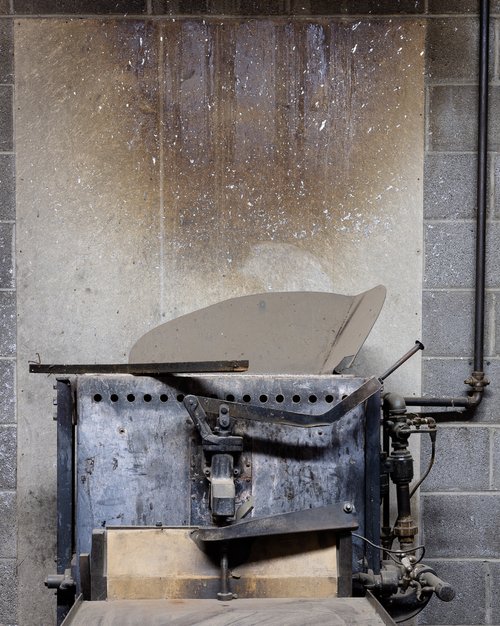
Linotype machine, former Norton Telegram Office, Norton, Kan., 2022 (Courtesy: Jeremiah Ariaz)
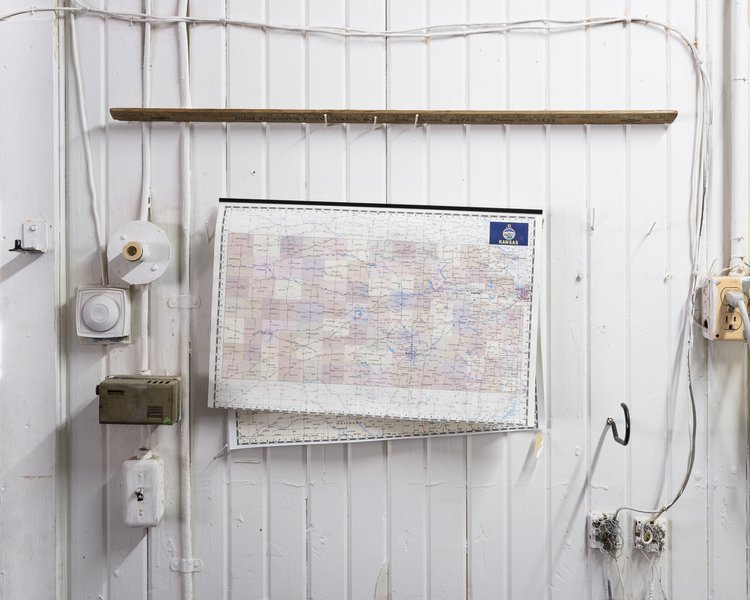
Kansas map, Yates Center News, Yates Center, Kan., 2022 (Courtesy: Jeremiah Ariaz)
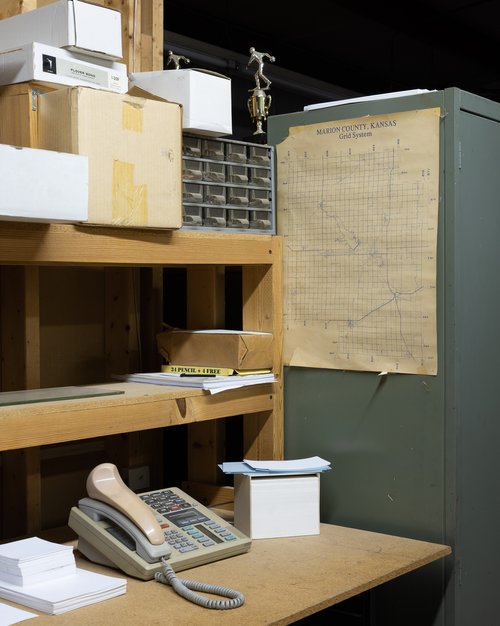
Still life, Marion County Record, Marion, Kan., 2022 (Courtesy: Jeremiah Ariaz)
Again and again, Ariaz looked up a newspaper on the Kansas Press Association’s site, went to visit and found it had just closed or downsized. Sometimes, it had happened so recently that nothing new was there yet.
“It put a sense of urgency to this,” he said.
While the places he visited were different — Russell, Liberal, Emporia — “I found in each office people that genuinely cared a great deal about the work that they were doing and about the community they were serving,” Ariaz said.
He also found, in the newsrooms still open, a bit of time traveling.
“Often you would find almost like an archeological site — layers and layers of technology that had once played a part in newspaper production.”
The images he made show machines only industry veterans might recognize — a Linotype machine in Norton, a printer’s drawer in Alma, a negative enlarger in Coldwater.
The colors, textures and objects inside the newsrooms he visited felt archival, too. Ariaz found dark wood-paneled walls with a portrait of William Allen White in the former home of the Emporia Gazette, which had recently relocated. In the former office of the Norton Telegraph, there’s a boxy computer monitor. In Wathena, the 165-year-old Kansas Chief has stained mint walls and yellowed maps.
“A lot of these spaces were really like stepping back into time.”
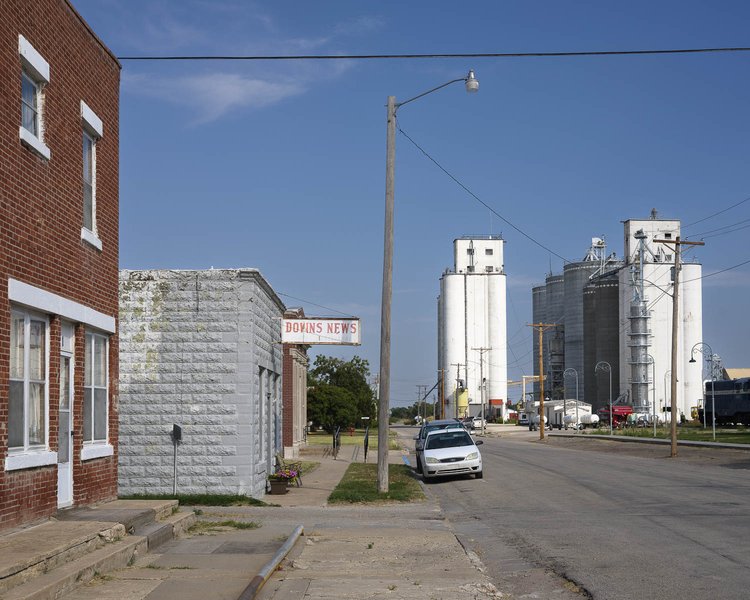
Downs News & Times office, Downs, Kan., 2022 (Courtesy: Jeremiah Ariaz)
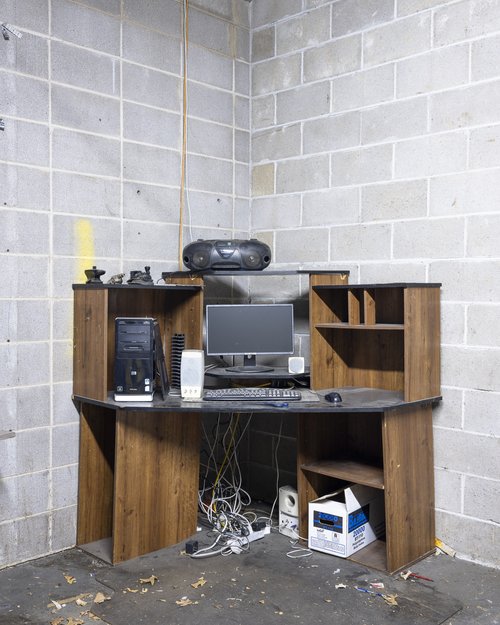
Work station, The Cowley Courier Traveler, Arkansas City, Kan., 2022 (Courtesy: Jeremiah Ariaz)
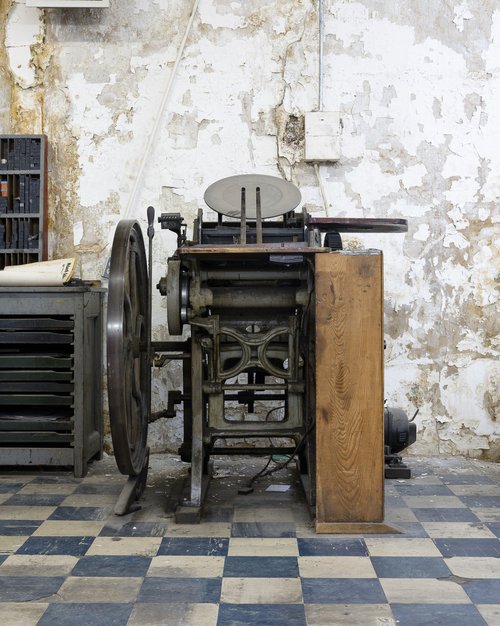
Press, Valley Falls Vindicator, Valley Falls, Kan., 2022 (Courtesy: Jeremiah Ariaz)
Ariaz stopped by publications that were still open and explained what he was trying to capture. Most invited him in. Many worried about what would happen to their archives and the community’s history if they closed.
When the newsrooms he visited had closed, Ariaz made images of their buildings. For those that recently relocated, he often was allowed into the space to find the signs of life that remained.
Ariaz tried to visit bigger newspapers in bigger Kansas towns, he said, but he couldn’t get ahold of anyone inside the newsrooms or inside the buildings themselves.
It felt like the people who own and run them, Ariaz said, were far away and unconcerned with the communities they were supposed to be serving.
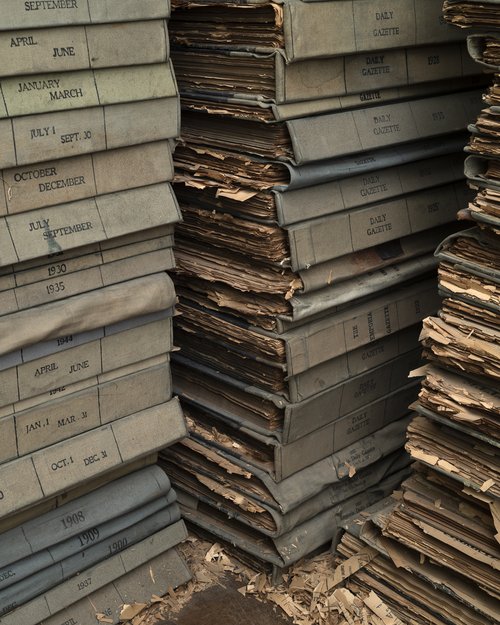
Bound archives, former Emporia Gazette Office, Emporia, Kan. (Courtesy: Jeremiah Ariaz)
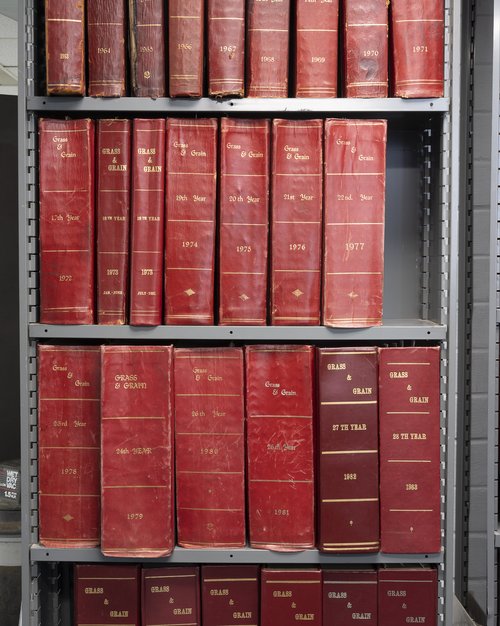
Bound archives, Grass and Grain, Manhattan, Kan., 2022 (Courtesy: Jeremiah Ariaz)
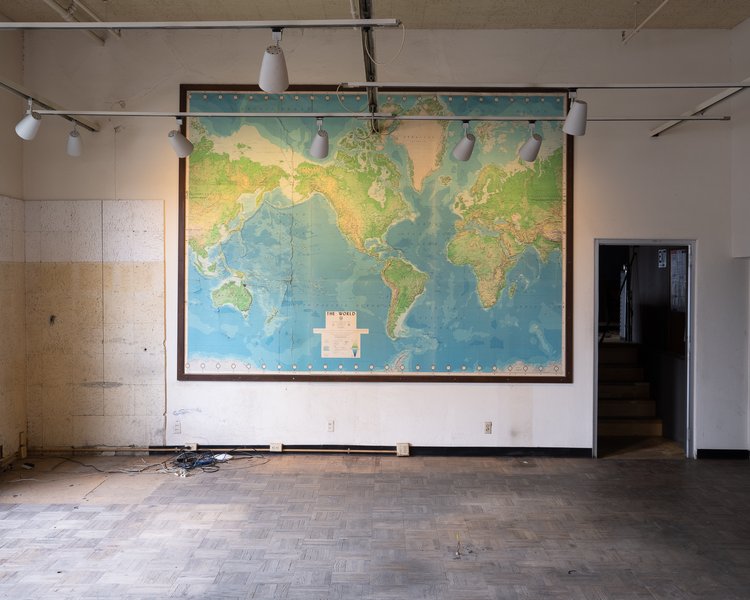
Map, Former Emporia (Kan.) Gazette Office, 2022 (Courtesy: Jeremiah Ariaz)
Ariaz is still going through the images he made while visiting rural Kansas newsrooms. While a handful of those images are online, he’s working now to share the project in the form of a newspaper itself.
During his travels, Ariaz watched as members of the community came in, asked questions and shared information.
It seemed, he said, like the newspapers that were still alive “were very much a part of the community in both the physical way in their presence but also their ability to engage with the public.”
In 2021, I helped tell the story of people in local newsrooms throughout the midwest who worked to keep people informed, and their newsrooms in business, during the early years of the pandemic. I thought about a quote from that story while reporting this one.
“These weekly rural community newspapers have just been a significant lifeline for people during this pandemic,” said one of the partners in that project, Teri Finneman, an associate professor at the University of Kansas, “and I don’t think that can be overstated.”
In the spring of that year, as some Tribune and McClatchy newsrooms closed their offices, I reported on why local newsrooms need a physical space and how we might rethink them.
That space as we’ve known it, pictured here in crumbling, evocative beauty, matters for more than just the journalists who work or worked there.
“I have to feel that something is missing when that ability for a citizen to engage is lost,” Ariaz said.
Bell, the publisher who sparked this all by inviting a photographer into his newsroom back in 2020, didn’t get to see the finished project. He sold the Haskell County Monitor-Chief in 2022 and died shortly after. The new owner, the Edwards County Sentinel, sits 80 miles away in Kinsley. The Monitor-Chief was renamed the Haskell County News.
There is still a physical newsroom in Sublette, but now, no one’s there full time.
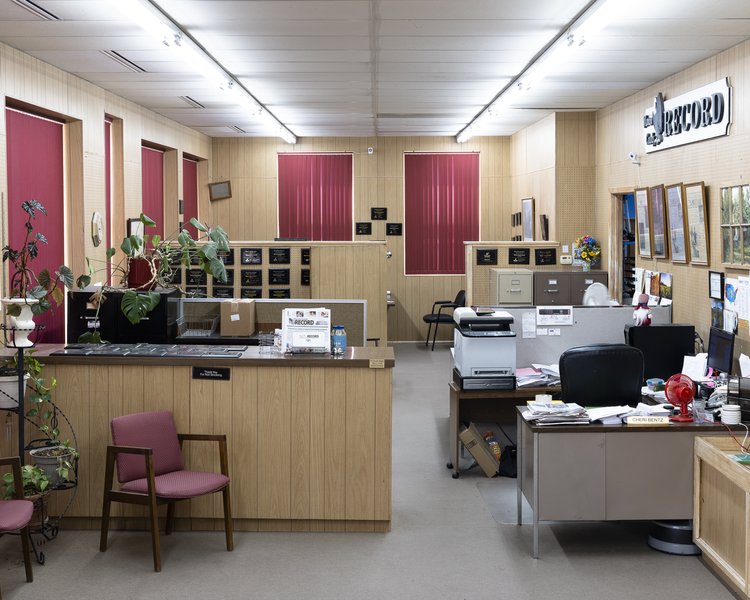
Interior, Marion County Record office, Marion, Kan., 2022 (Photo by Jeremiah Ariaz)
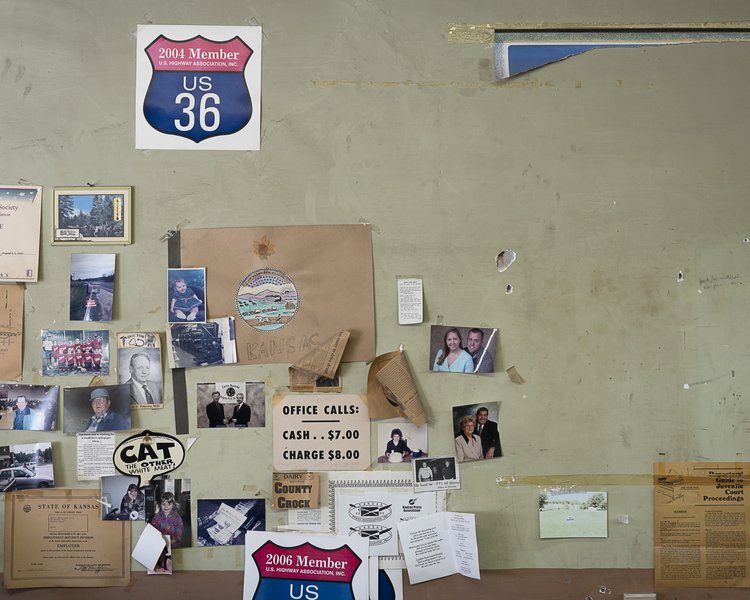
Kansas Flag, The Kansas Chief, Wathena, Kan. (Photo by Jeremiah Ariaz)

Office Interior, The Tiller and Toiler, Larned, Kan., 2021 (Photo by Jeremiah Ariaz)




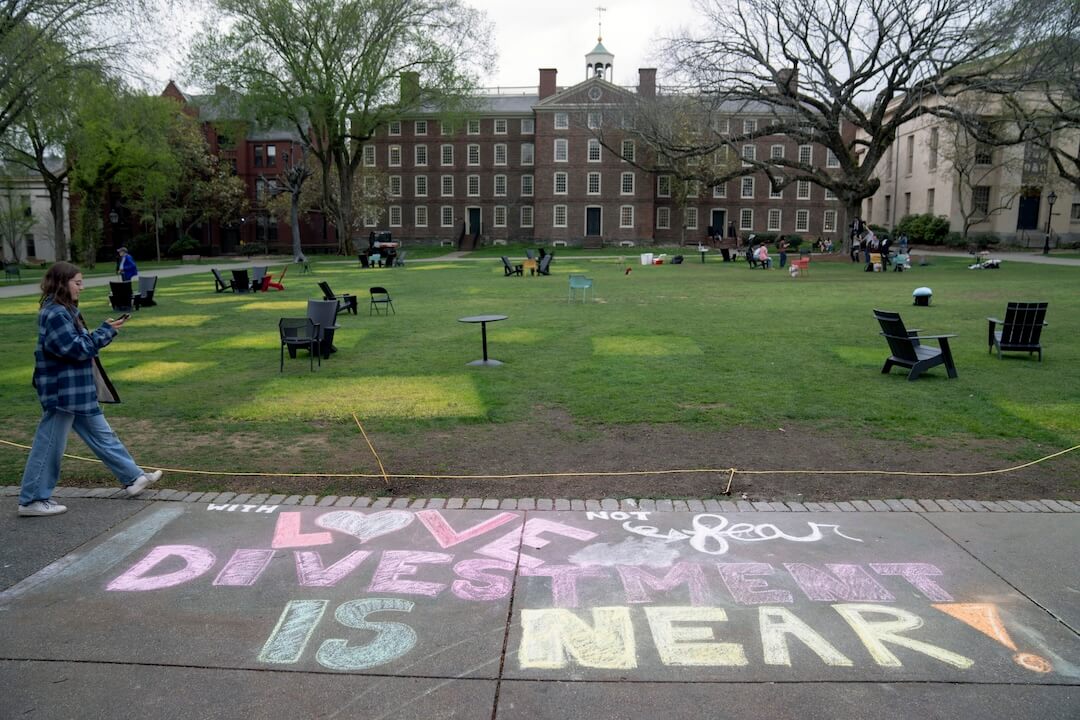

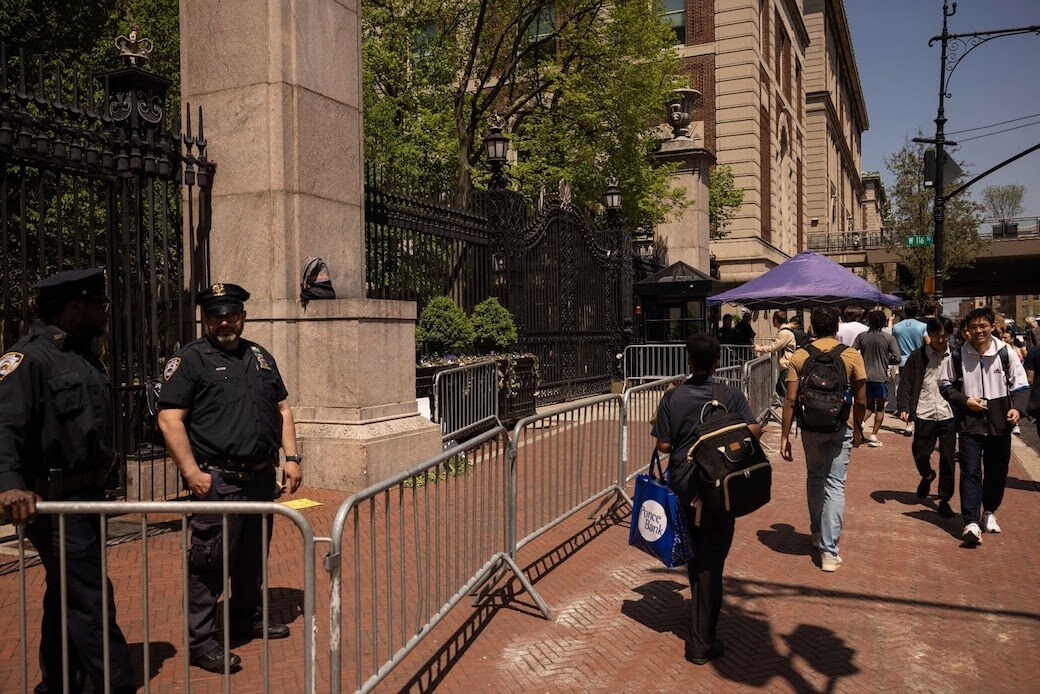

What an incredibly depressing piece. It had all the cheerfulness of a story highlighting the children with terminal illness in a cancer ward.
“It seemed, he said, like the newspapers that were still alive “were very much a part of the community in both the physical way in their presence but also their ability to engage with the public.””
They seem surprised by this. Like wow these ancient fading dinosaurs are actually relevant in their communities.
One of the issues the newspaper industry faces is that people such as the writer of this piece, who are journalism educators, have bought into the storyline that we are dead men walking.
I would suggest that the bigger story isn’t the death of small town newspapers but the death of small towns themselves. Rural areas are seeing a population bust. Consolidation of basic wealth-generating businesses such as in farming have eliminated jobs and local businesses that relied on those workers spending their paychecks with them. The local economic webs have been collapsing for years and the newspapers are as much a casualty as the local shoe stores, the mom and pop grocery stores and the corner 5 and dime.
The last picture is evocative for me. My Dad was born in a sod house near Larned in 1918. I had family in Atwood, KS, and decided to go down Highway 36 to see Larned, and found a tiny town that barely had one street. I don’t know if it’s even that big today.